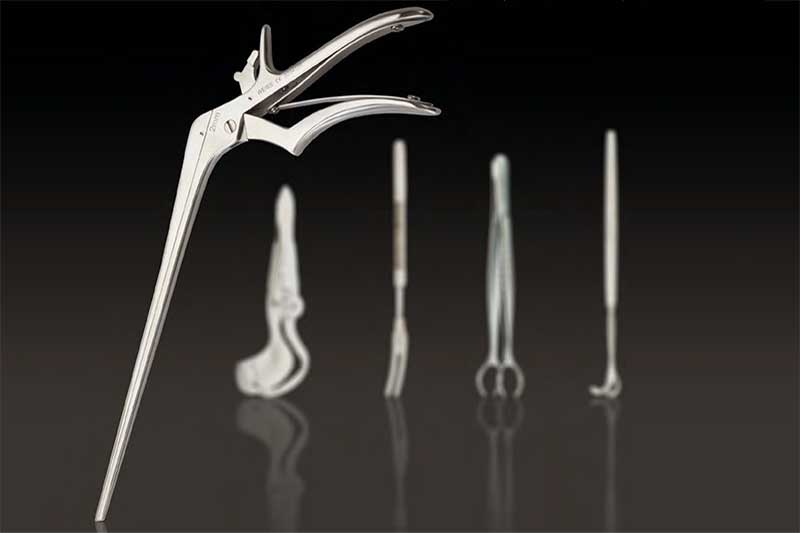
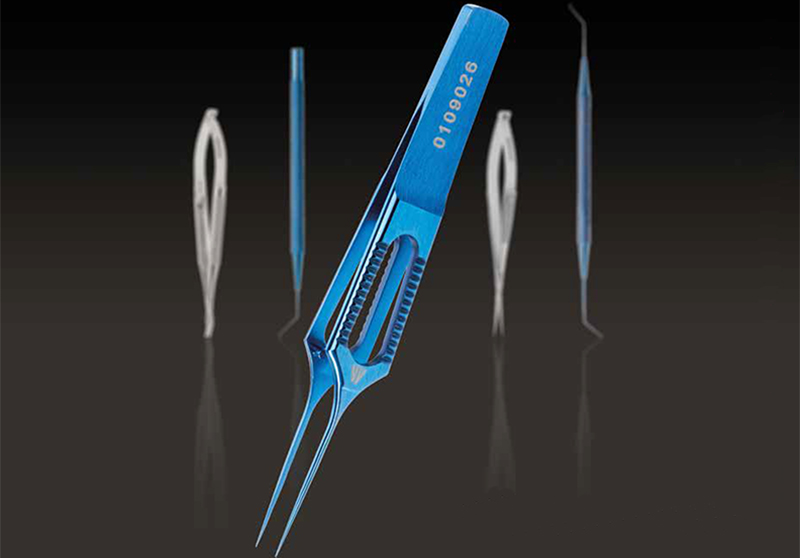
Forceps
Forceps form an extension of the Surgeon’s fingers enabling secure handling of tissue, suture, and intraocular lens. They can be used to grasp, hold, pull/push, lift, or tear depending on the tip design and application. A comprehensive range of forceps for all incision sizes, as well as a choice of direct or cross-action handle styles and materials, is available to suit individual Surgeon requirements and preferences.
The John Weiss forceps range includes; Moorfields and other non-toothed/tying, notched, toothed, Capsulorhexis, Colibri, Cilia, Muscle/Strabismus, Lens, Artery, towel clamps and specialist forceps.
Needle holders
Needle holders are used when suturing – allowing the surgeon to both apply the needle at the correct angle to the tissue and achieve the correct depth. Stainless steel needle holders coming into contact with a magnetised surface will become magnetic, making it difficult to release a suture needle, for this reason titanium needle holders are often preferred.
The John Weiss range of needle holders consists of curved and straight, with or without catch and covers the suturing techniques of all ophthalmic subspecialties. The titanium needle holders help Surgeons to perform smooth and magnetic-free suturing, thus speeding up the surgical operating time, leading to improved postoperative results.
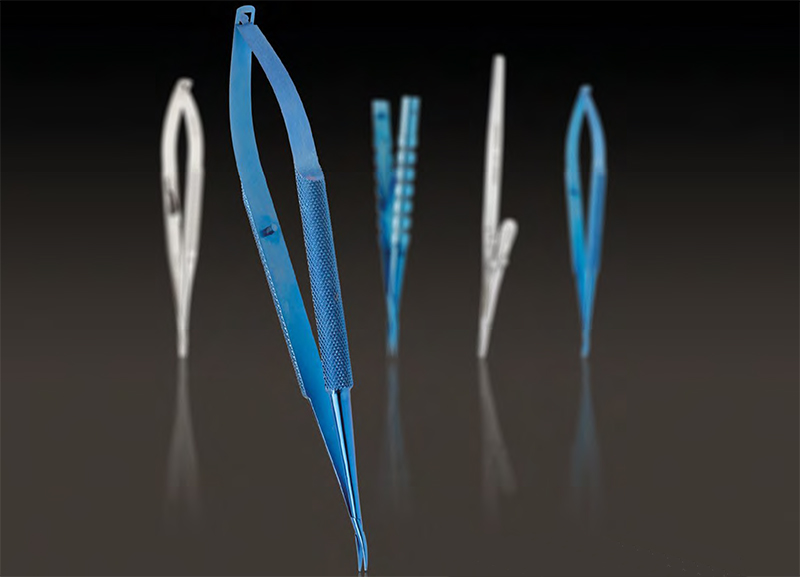
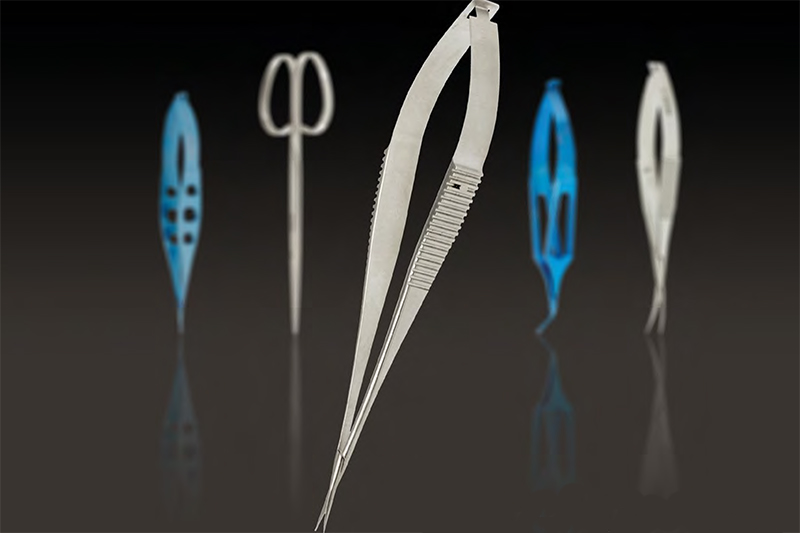
Scissors
Scissors can be used to cut tissue, sutures, and dressings or to divide or separate tissue without cutting (blunt dissection). While scissors can be made from titanium, we highly recommend stainless steel as it maintains its cutting edge longer. The delicate and small structures of the eye require sharp, precise and fit-for-purpose instruments. It is important that the scissor blades are kept sharp and, for this reason, John Weiss provides a sharpening service.
The John Weiss scissors range includes; spring scissors (such as De Wecker, Vannas, Westcott, Williamson-Noble, Corneal, and Capsulotomy) as well as bow/ ribbon scissors such as Strabismus, Stevens Tenotomy specialist and utility.
Choppers & manipulators
This group covers a wide variety of instruments commonly called ‘side port’ or ‘second’ instrument. They are mainly used through the paracentesis incision but can also be used through the principle incision. Choppers and splitters are generally used to break up the crystalline lens, while manipulators are used to move lens fragments or the intraocular lens (IOL). Other instruments that are of a similar design are hooks, used to atraumatically manipulate the iris or capsular bag.
The John Weiss choppers and manipulators range includes; choppers & splitters, manipulators, spatula/repositors, double-ended combinations, hooks and vectis.
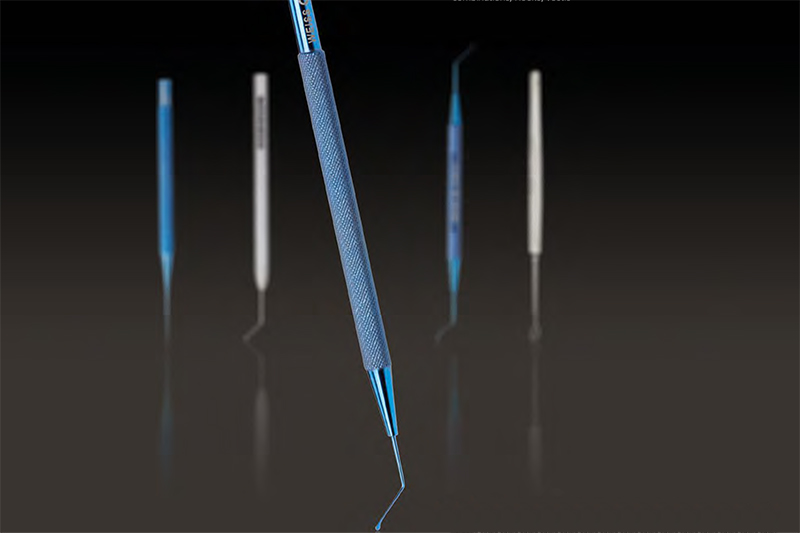
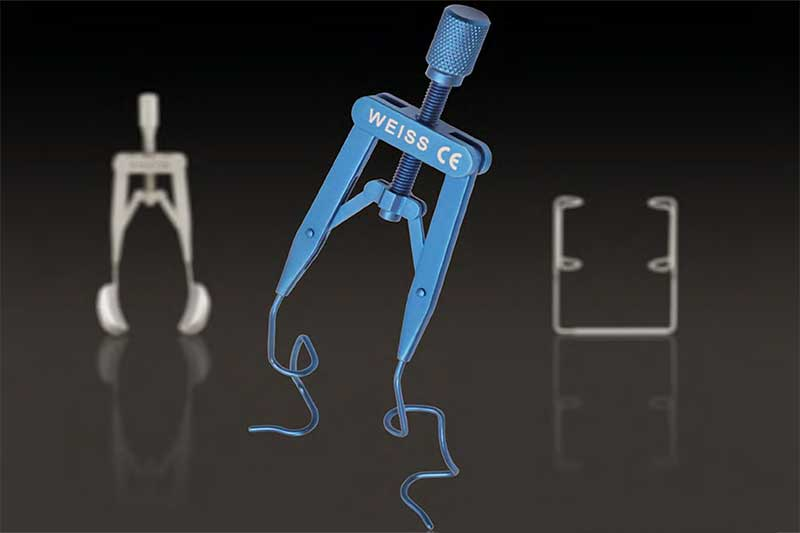
Specula
Specula are designed to hold the eyelids apart during surgery allowing adequate access to the eye. They are designed for a variety of approaches, such as temporal or superior.
The John Weiss specula range includes; adjustable and non-adjustable, available in both infant and adult sizes.
Extraocular range
Extraocular procedures are performed on the external structures of the eye and surrounding tissue (adnexa). These are usually dealt with by Oculoplastic, Strabismus or Orbital specialists and include surgery to the eyelids, extraocular muscles, lacrimal and orbital structures.
The John Weiss extraocular range includes lacrimal probes & dilators, Lester Jones Tubes, DCR punches & intubation sets, retractors & hooks, chisels & osteotomes, orbital instruments & implants and enucleation/evisceration instruments.
